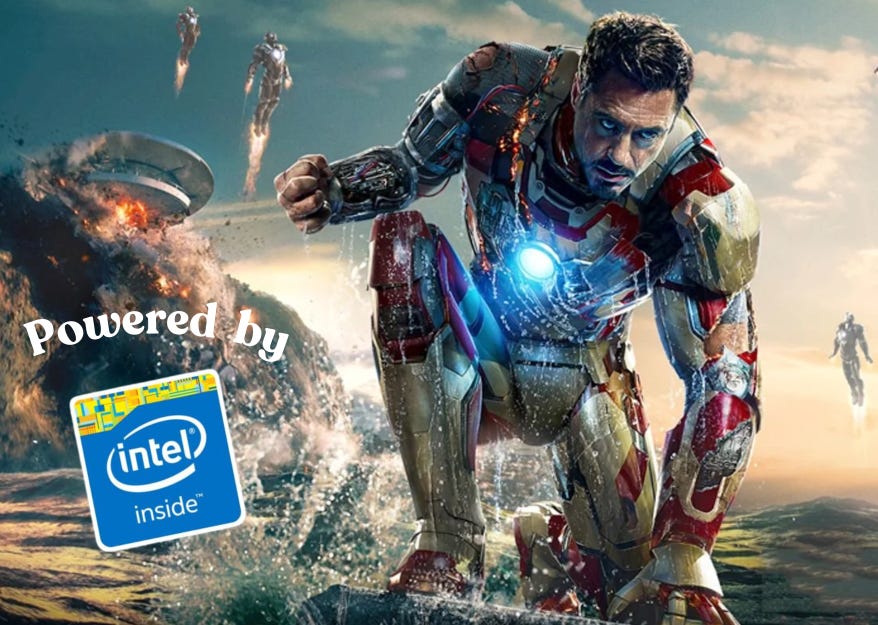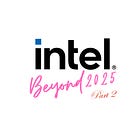INTC: Cigar Butt / Margin of Safety? (Part 2)
Wells Fargo 2024: Solvency Issues Overblown
TABLE OF CONTENTS:
1. Q2 Segment Results: Where It Hurts (P&L Analysis)
2. Solvency Issues Overblown — Here’s The Proof (B/S + CFS Analysis)
3. INTC: Worst-Case Valuation
4. INTC: Best-Case Valuation
5. 📊 INTC 3-Statement Model (download)
“As far as I am familiar, such a co-investment in individual semiconductor fabs has never been done before — nor is it a business arrangement that makes intuitive commercial sense. If such an unholy marriage of capital had indeed been arranged by “friends from above”, I see no ceiling to INTC’s ability to scale IFS to infinity & beyond. It’d also be a great way for Intel to catch up to TSMC in terms of foundry capital expenditure.”
Watching the trashing that Intel is taking in markets invoked a sense of déjà vu within me. This led me to seek answers in Yefei Lu’s excellent book Inside the Investments of Warren Buffett: Twenty Cases, which gives a blow-by-blow account of what Wells Fargo went through in 1989-1990 when Buffett first acquired his legendary stake in it.
The entire Chapter 16 on Wells Fargo is worthy of a re-read — but in the interest of brevity here’s how Buffett might have perceived Wells Fargo at the time:
The bank was rocked by two concurrent industry crises — the Savings & Loans banking crisis which had been ongoing for most of the late-1980’s; and a real estate recession which started around 1986 and was still happening. The recent Loma Prieta earthquake in 1989 also massively affected Californian property values.
Wells Fargo’s loan portfolio was not only concentrated in construction and mortgages, it was also significantly exposed to California. There had also been a huge property bubble brewing in the state around the same time as the aforementioned events, priming both industries for a huge meltdown.
However, Wells Fargo’s balance sheet was incredibly robust. At end-1989, it reported a Tier-1 Capital ratio of 4.95%, delinquency ratio of 0.32%, and loan loss allowances of 1.77% of total loans. By all accounts, it was simply not going to fail and would weather the storm just fine.
In stark contrast, markets infamously punished Wells Fargo’s stock price, driving it down to just 5x trailing PE at one point. It’s no surprise then that Buffett gobbled it up, whereupon it earned a spot as one of his legendary anchor investments.
Now, let’s try and compare Wells Fargo in 1990 to what Intel looks like today:
The semiconductor company is having its reputation trashed by successive execution failures — including the inability to replicate TSMC on US shores by yesterday, as well as a broader industry downcycle owing to excess sector inventory resulting from massive pandemic pull-forward demand. Notably, neither of these were within management’s control, and there are already clear signs of recovery in both.
There is a clear light at the end of the tunnel for INTC — becoming the only reliable leading-edge foundry in the Western Hemisphere before 2040. On two continents, and for both militaries. Imagine what the chip demand for a rejuvenated pan-European military force would look like — this is before anything the biggest military, Navy and Air Force would require. This is Lockheed Martin’s resurrection in all but name.
Both Uncle Sam and Queen Europa have every incentive to see Intel IFS succeed, and will likely even backstop them if necessary. Not only is the risk of bankruptcy negligible, there’s already precedent for equity partners (Brookfields and Apollo) co-investing in foundry shells at the joint venture level, rather than requiring equity dilution at the Group-level.
As we saw in last week’s Part 1, Intel faces no cash flow risk whatsoever. In stark contrast, it would seem that the broader sector might finally be turning around, as evident by the 1H24 inflection of CCG operating income. While turning performant overnight remains an unlikely prospect, bankruptcy appears to be an even less likely one.
There is simply overwhelming evidence that INTC is going to emerge from this entire debacle just fine, as Wells Fargo did. Maybe not unscathed as evident by the recent headcount and dividend restructuring — and maybe Pat could afford to recognize the optics of praying online — but we’re talking about bankruptcy being the alternative here. That’s just not going to happen, and if so it’s worth asking what else could happen.
In last week’s INTC Part 1 article, we explored how Intel’s business is far from being written off as dead. In this Part 2 follow-up, we’ll unpack their historical earnings performance by segment to drill-down deeper into the various factors of recent underperformance, and obtain clarity on which parts of the business require rehabilitating (or not).
As we shall see, there’s a lot of misunderstanding floating around about the future trajectory of their businesses (e.g. CCG). This should be enough to inform us where INTC’s fair value stands, including taking account of the many uncertainties at play. As we shall see later, it’s not a very high bar to clear.
What we hope to find in the data is the presence of a substantial Margin of Safety. Without further ado, let’s dive in. This is your financial primer to Intel: Wells Fargo 2024.
Click one of the links below for more Value Investing articles!
Unpopular Opinion: Diversified Portfolio > Concentrated Portfolio
Value Investors = Business Owners. Here's The Irrefutable Proof.
How I Became 100% Convinced that Value Investing Was Superior
Q2 Segment Results: Where It Hurts
Keep reading with a 7-day free trial
Subscribe to Value Investing for Sophisticated Investors to keep reading this post and get 7 days of free access to the full post archives.









